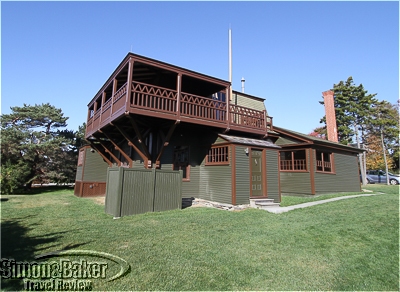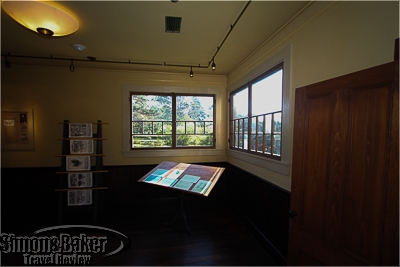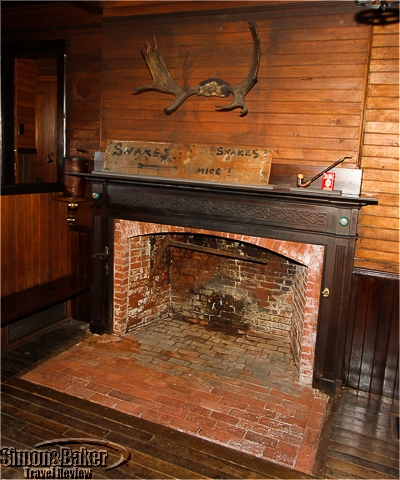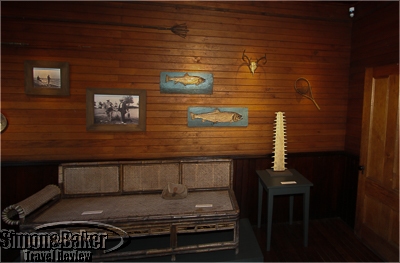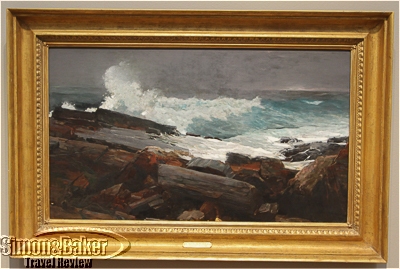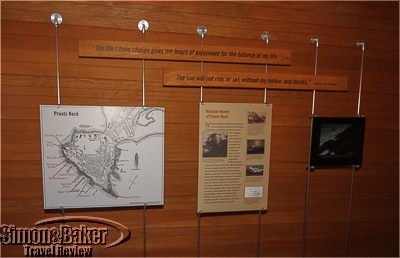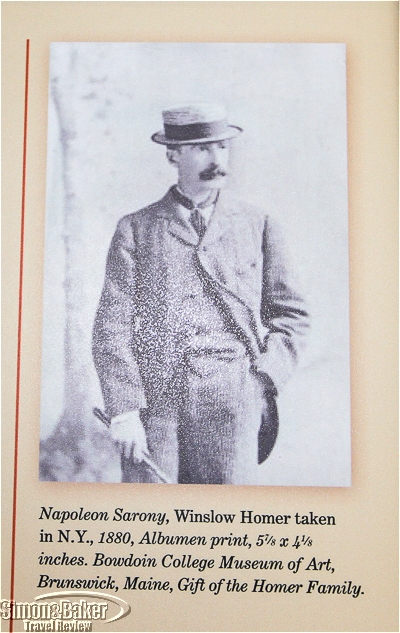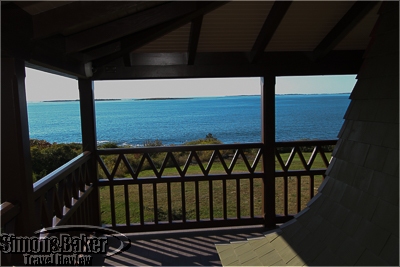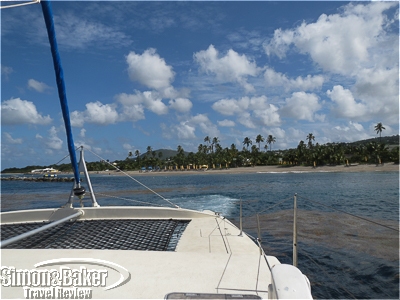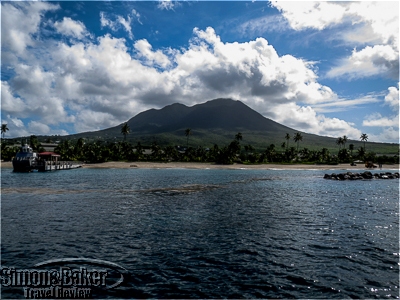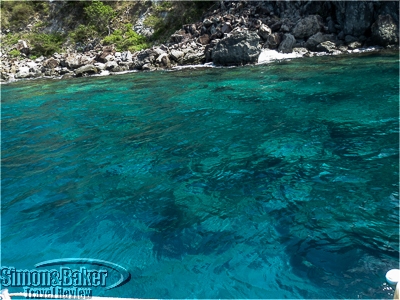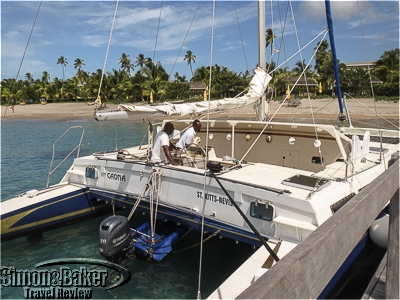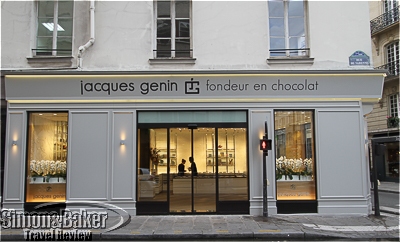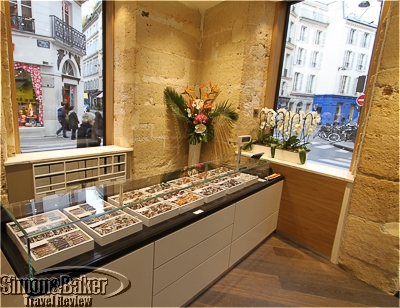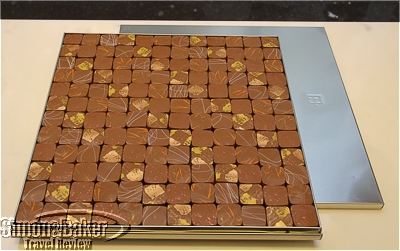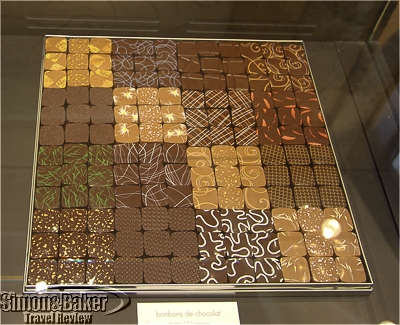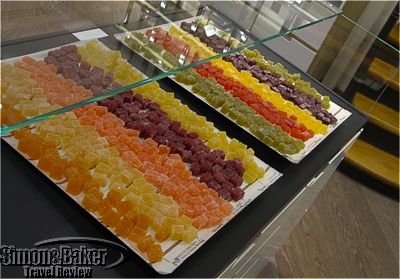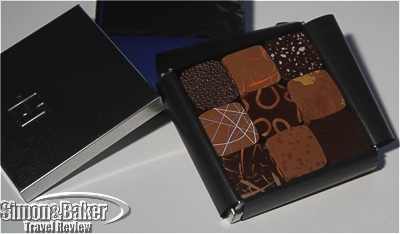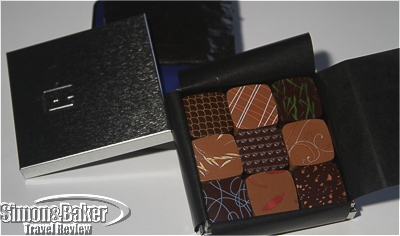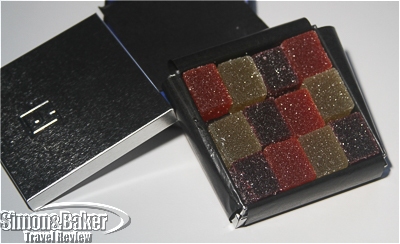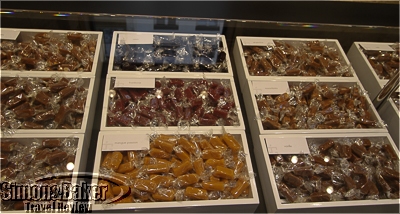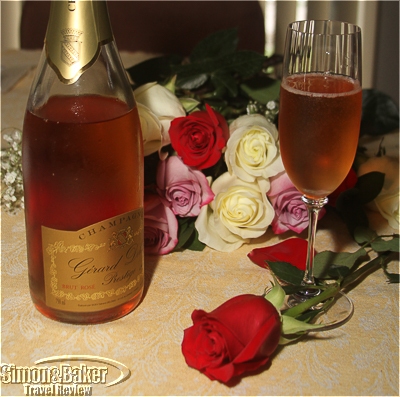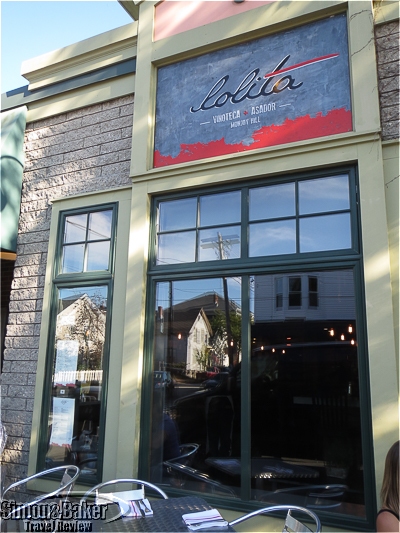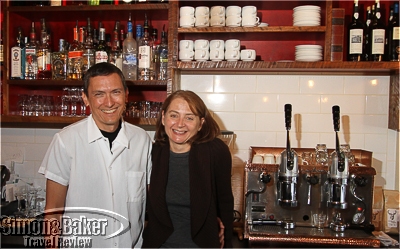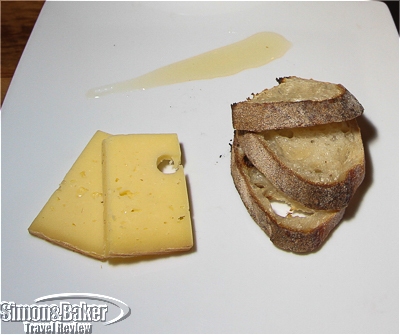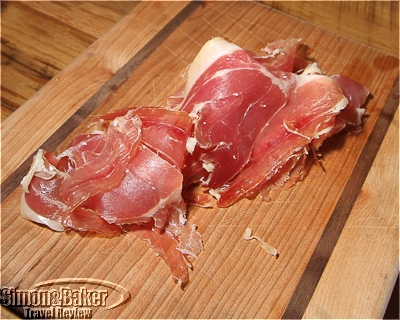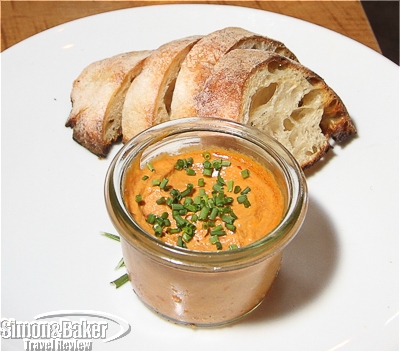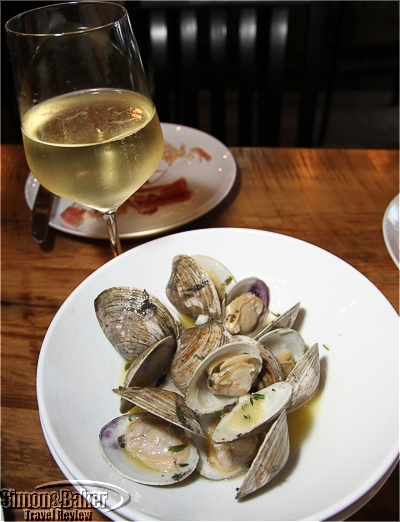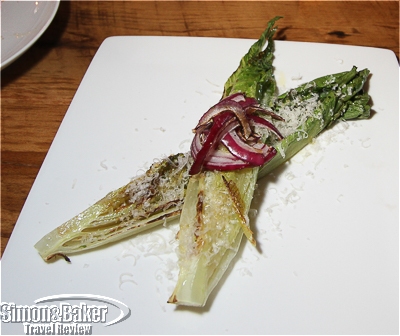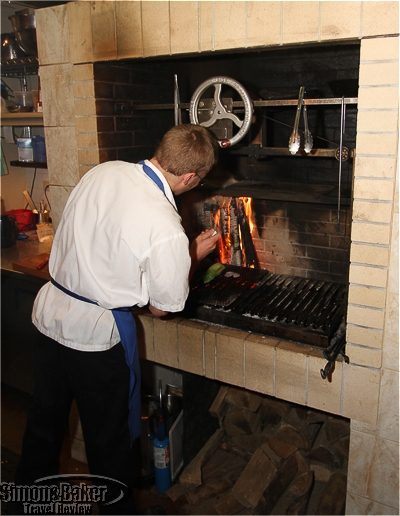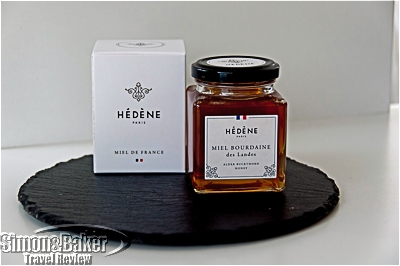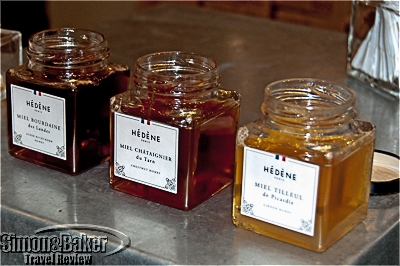Luxury Travel Review

At restored Winslow Homer Studio a peek back at artist former home, iconic coastal Maine views
By Elena del Valle
Photos by Gary Cox
Exterior view of the studio (click to enlarge)
American painter Winslow Homer (1836-1910) lived and worked on many of his masterpieces from 1883 until his death in Prouts Neck, Maine where he enjoyed dramatic views of the ocean crashing against the rocky coast, which inspired his famous artwork, and some believe transformed marine painting in American art. Last fall, while staying at the Inn by the Sea in nearby Cape Elizabeth, Maine, we had an opportunity to stop by the Winslow Homer Studio (http://www.portlandmuseum.org/homer/visit, +1 207 775-6148), his former home and studio in Prouts Neck, about 12 miles from Portland, now restored and part of the Portland Museum of Art in Portland.
Worktable with a view located in the studio (click to enlarge)
The building was moved 100 feet away from the “Ark,” the house next door, and converted from a carriage house to living quarters in 1883 by John Calvin Stevens, an architect, and his brother-in-law Howard Stevens, of the Portland firm Fassett and Stevens. In 1890, Homer had the porch, pergola and a painting room added. Today, the Studio is 2,200 square feet, 44 feet by 53 feet, and two stories high.
The fireplace with a few original touches
Few original items remained at the time of our visit. They were: a bench called an Inglenook, a detail common in architect John Calvin Steven’s homes; his fire bucket (with initials W.H.); moose antlers over the mantle; the sign he made “Snakes, Snakes, and Mice” that he put outside, as he said, “to keep away the rusticators;” his pipe and tobacco, his copper kettle, and his chair. The wooden mantle and the fireplace were painstakingly restored to their original state.
The daybed and wall mounted trophies (click to enlarge)
By the main living room north interior wall, there were items belonging to Winslow Homer: daybed, fish trophies, fishing pool, eel spear, and sawfish bill. The museum added reproductions of photographs of the artist and his family and a facsimile of a family album to illustrate the story of Homer’s everyday life at Prouts Neck. Museum staff believed that in the painting room west window and south interior wall a Chinese table, and props from paintings hint at the lush interior of Homer’s New York apartment, and provided a contrast to the rustic nature of his life at Prouts Neck. Items from his Studio, a bell and an octant, as well as a medal Homer received from the Carnegie Institute, decorated the tabletop dating to 1896.
Weatherbeaten from the Portland Museuam of Art (click to enlarge)
Inspired by the rugged beauty and dramatic weather of Prouts Neck Homer produced works that revolutionized marine painting in American art and created an iconic and enduring image of the New England coast. The Portland Museum of Art’s painting Weatherbeaten from 1894 served as the namesake for the exhibition and a quintessential example of the artist’s late work. Museum staff believed the image of rough waves crashing against a rocky shore embodied Homer’s ability “to capture the specificity of a place, while simultaneously meditating upon the timeless forces of nature.”
One of the display areas had information about the area.
According to a museum representative, in the artist’s Prouts Neck pictures, he envisioned nature as an arena for the constant clash of forces, water against rock, and humankind against the elements. In Eight Bells, 1886 painting displayed at the Addison Gallery of American Art, Phillips Academy, for example, he represented fishermen facing stormy weather at sea with Homer’s characteristic narrative ambiguity that experts believe leaves the viewer wondering about their fate. Homer’s iconic painting Fox Hunt from 1893, which rarely leaves the Pennsylvania Academy of Fine Arts, was expected to make its first visit to Maine since its creation. Experts who consider it a masterwork say it “thematizes mortality and evolutionary conceptions about the survival of the fittest that arose in the late 19th century.”
A reproduction of a photograph of Winslow Homer at the Studio
In 1893, Homer first exhibited at the Portland Museum of Art. In 1976, Charles Shipman Payson pledged his collection of 17 paintings and watercolors by Homer and an endowment that led to the construction of the Charles Shipman Payson building, the public face of the Museum. The Museum’s Homer collection also included such notable objects as his first important oil painting, Sharpshooter from 1863; an original watercolor paint box; and a significant collection of 400 wood engravings that represented 90 percent of Homer’s graphic output, and chronicled the artist’s early career as a commercial illustrator.
A view from the upper floor (click to enlarge)
Following the purchase and restoration of the building, a National Historic Landmark, in 2006, the museum opened the Studio to the public in 2012. In 2014, the museum, the Prouts Neck Association and the Scarborough Land Trust bought the land, a little more than half an acre, surrounding the Studio with the goal of conserving it in perpetuity as open, undeveloped space. The museum showcased three centuries of fine and decorative arts from the 18th century to the present, including renown artists such as Winslow Homer. Winslow Homer Studio tours, two and a half hours long, were available for up to 10 visitors at a time by reservation only. The tours departed from the Portland Museum of Art in a Mercedes Sprinter van.
Azure waters, gentle breeze made for relaxing morning sail in Nevis
Article and photos by Elena del Valle
Our view of the Nevis shore as we sailed toward Saint Kitts
During a recent stay in Nevis, part of Saint Kitts and Nevis in the Caribbean, I went on a relaxing three-hour morning sailing activity aboard the Caona, a pretty catamaran owned and operated by Leeward Islands Charters (Fort Street, P.O. Box 586, Basseterre, Saint Kitts, +869-465-7474, fax 869-465-7070, www.leewardislandscharters.com, sail@leewardislandscharters.com). The weather had been mixed due to regional storms and I wondered if the outing would be cancelled. Luckily, on the day of the activity, the weather was good and there was a slight breeze.
From the sailboat we saw Mount Nevis and the shoreline – click to enlarge.
From the Montpelier Hotel and Beach, a pretty and secluded hillside hotel on the other side of the island where I was staying, I made my way to the Four Seasons Hotel in time for our 11 a.m. departure. Crossing from the parking lot to the dock I was pleased when I sighted the Caona. The sailboat, made in Saint Kitts in 1985, was 47 feet long by 22 feet wide and had a maximum capacity of 24 passengers on the Nevis Sail & Snorkel activity. A friendly man with an island accent and a clipboard welcomed me, asking right away if I was staying at the Four Seasons Hotel where the boat had docked and everyone else was staying. I assumed he wanted to know what room to charge.
A beautiful day for sailing
I shared the boat with three couples, all Four Seasons guests visiting from the United States. Once we boarded the vessel, Lennox Wallace, our friendly captain, introduced himself and Elvis Richardson, his first mate; told us about the boat and its amenities, and what we would be doing.
At first we all sat in the shade next to the captain, getting to know each other and gazing curiously at the receding Nevis shore as we made our way slowly toward Saint Kitts. The sun felt warm and pleasant on my skin. Puffy white clouds peppered the cerulean Caribbean sky in a picture perfect moment. A mild breeze and the sound of splashing as we glided gently over the water completed the scene. The boat swayed with the gentle surf as we cut a line across the Caribbean waters in a westerly direction.
Lennox Wallace, our captain, at the helm
After spraying liberal quantities of sunblock, the captain had warned us to sunblock was essential, I carefully made my way forward. I sat down on the deck, bringing one of the many towels available with me in case the surface was hot (it was cool to the touch). Soon the couples also all made their way to the same area of the boat. Elvis brought us cold drinks. The choices were rum punch, beer, soft drinks and water. We chatted amongst us, exchanging pleasantries until the rhythmic lull of the boat soothed us into a companionable silence.
We snorkeled in clean turquoise water in Shitten Bay, Saint Kitts – click to enlarge
Before long we reached Shitten Bay, a calm cove in Saint Kitts where the crew anchored with ease. Although there had been a boat when we arrived, it departed within moments, leaving us in the privacy of our temporary shelter. We sighted a turtle before we had even settled in our new spot. While Elvis sorted out snorkeling gear for each of us the captain instructed us on the snorkeling site and safety procedures. Like the boat itself the snorkeling equipment was clean and smell free. I was delighted to discover they had fins and a mask that fit me.
Our catamaran was 47 feet long and 22 feet wide and could accommodate up to 24 passengers.
Within minutes of arriving we were all scattered in the warm water admiring the sea life below the surface.
Colorful tropical fish swam up to twenty feet below in a bed of rocks peppered with a few young coral. Slowly we each came back, climbed the ladder and dried off the salt water. After we all returned to the boat and settled down we headed back to our island. A short sail later we arrived back in Nevis, smiling. At the dock we all said our good-byes and headed back to our respective plans for the day. I sighed contentedly. The morning of pleasant sailing shared with a handful of equally pleasant people, and snorkeling in turquoise warm waters had left me with an irie feeling. That carefree sense was why I had gone to Nevis.
Paris chocolate, candy maker opened new Left Bank shop
By Elena del Valle
Photos by Gary Cox
The exterior of the Left Bank shop
About two years ago we visited the Jacques Genin, fondeur en chocolat factory and shop in the Right Bank of Paris, France (Passionate chocolate, candy maker draw to Paris Marais shop) where we met the enthusiastic chocolate and candy maker and tasted some of his creations. Recently, we visited his new 80 square meter Left Bank corner shop (27 rue de Varenne, 75007 Paris, France,+33 1 53 71 72 21, www.jacquesgenin.fr) and carried home goodies to taste. We liked that they were made fresh at the Jacques Genin factory in Paris from all natural ingredients.
Flowers and large windows made the shop bright and cheerful – click to enlarge
The brightly lit spacious shop was a treasure trove of candy, displayed behind elegant glass topped cases. It occupied a prominent corner in the well heeled seventh arrondissement.
A box of milk chocolates – click to enlarge
Distinctive markings formed designs that identified the various flavors – click to enlarge.
Fruit and vegetable candies added a touch of color – click to enlarge.
Once again we were delighted with the fragrant and delicate flavors in his bite size chocolates which had to be consumed within a week. A distinctive pattern or design on each chocolate was useful in identifying the filling by referring to a card the staff provided with our two boxes of nine chocolates each. Three types of chocolate were described in French on the card as well as candy like the caramels and pates de fruit flavors. There were three main categories of chocolate: dark, milk and praline. The praline was available in dark and milk chocolate flavors. Among the flavors we sampled was dark chocolate chestnut honey, dark chocolate mint and almond, dark chocolate praline, dark chocolate almond praline and milk chocolate hazelnut praline. We were unable to identify all of the flavors.
The chocolate and pate de fruit came in the distinctive square metallic boxes we recognized from our previous visits to the chocolate shops. We tasted some of the products from his new line of pates de fruits vegetable candy made from seasonal produce such as turnip, beetroot, carrot, celery, fennel, sweet pepper, and cucumber. While we appreciate their special nature they were not favorites. The next time we visit one of his shops, we’ll revert back to the fruit candy we have enjoyed in the past.
The box of chocolates and praline we tried – click to enlarge
The box of chocolates we tried – click to enlarge
The box of the new vegetable Pate de fruit we tried
Caramels in a variety of flavors were on display in the Left Bank shop.
We also tried several caramels including the popular passion fruit as well as blackcurrant, raspberry, honey, almond, and salt butter. They were outstanding.
Happy New Year!
Promising new tapas wine and grill eatery in Portland, Maine
By Elena del Valle
Photos by Gary Cox
The exterior of Lolita Vinoteca + Asador
Lolita Vinoteca + Asador (90 Congress Street, Portland, Maine 04101, +1 207-775-5652, http://www.lolita-portland.com/, info@lolita-portland.com), a few blocks past the Portland Observatory on one of Portland’s main streets, was easy to find. Maine’s coastal city had many dining choices from exotic to exclusively local. Lolita, established by Guy (executive chef) and Stella Hernandez and Neil Reiter was the only Spanish themed tapas eatery with a wood fired oven we came across. The 900 square foot eatery with a staff of 12, table seating for 20, and space for 10 at the bar opened its doors in June 2014.
Guy and Stella Hernandez
The menu, described as “American cuisine, guided by Mediterranean and old-world traditions,” featured small plates and plates to share with specialty dishes from the wood-fired grill and meats from the eatery’s antique prosciutto slicer.
Bread, honey and Consider Bardwell cheese
Prior to Lolita, Guy and Stella owned and operated Bar Lola for seven years. Lolita is a reference to that previous establishment in that the Asador where we had lunch was smaller and less structured than Bar Lola had been. Vinoteca, or wine facility in Spanish, referred to Stella’s wine and beverage background. There was a list of 75 wines featuring classic wine regions and varietals, as well as unique selections from around the world. Plans were in place for an extensive by-the-glass program with full, half-glass and flights options. Asador, referring to an establishment that features food cooked over an open fire in Spanish, highlighted the custom grill in the open kitchen.
A serving of thinly sliced Serrano ham
Before entering the restaurant industry, Guy held a number of teaching positions in architectural design and technical drawing. In 2006, before opening Bar Lola, Guy was a baker at the One Fifty Ate Bakeshop in South Portland, and assisted with the launch of Scratch Baking.
Stella, general manager and beverage director at Lolita, had more than a decade of experience in the hospitality industry. Prior to working at Lolita, she held the same positions for Bar Lola. She was a member of the Guild of Sommeliers and was taking Court of Master Sommeliers education courses. Stella and Guy were the owners of Hilltop Coffee, nearby.
The Sardine Rillette pot with bread
Neil’s passion for the restaurant industry grew out of his experience as a silent partner in several successful New York City restaurants and clubs. Previous entrepreneurial experiences included founding and being president of Reiter Marketing Group, Inc., and R & J Partners, LLC.
Our order of Wood Roasted Clams
We liked the casual contemporary decor with post industrial features, as well as the friendly and well informed, if slow paced, service. Mostly we enjoyed the food. We sampled a variety of the dishes: Thinly sliced Serrano ham from La Alberca, Spain; the day’s special short rib panino; Consider Bardwell, a West Pawlet, Vermont cheese; local Wood Roasted Clams (a favorite); Spicy Sardine Rillette, served in a pot with roasted slices of bread; Grilled Romaine served with Tarragon Vinaigrette and Pecorino cheese shavings (a favorite); and a homemade Apple Tarte Fine for two. We washed it down with a glass of cava and a pale ale.
The Grilled Romaine
One of the staff making Grilled Romaine in the Asador
Our only complaint? Parking was difficult to find in the residential neighborhood of Munjoy Hill. It took us ten or more minutes of circling around the eatery to locate a parking space two blocks away where we hoped our car would be safe from the tow trucks announced on many city signs.
Monofloral honeys bring diverse regional essences of France to the table
Article and photos by Josette King
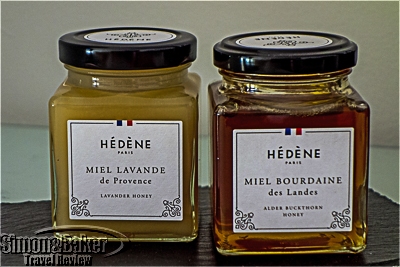
Signature Hédène cube jars were a common site on the shelves of gourmet shops
“Please hand me the rosemary honey,” my friend asked. I was wedged in a corner of her diminutive Paris kitchen where she was whipping up an impromptu dinner while we caught up after a long separation. “Honey in the vinaigrette?” I thought as I reached on the shelf above my head for a cube-shaped jar filled with rich amber liquid. “The rosemary,” she insisted, “the light one.” I glanced at the jar in my hand. A smart white label announced “Hédène Miel Sapin du Jura” (Jura Mountains Fir Honey). I reached up again for an identical jar, that one filled with a silvery concoction. “That’s lavender,” she said absentmindedly, arm stretching above me to retrieve a third jar just a notch darker, a pale champagne color. I couldn’t resist asking: “why do you need all this honey?”
“This is not just honey,” she pointed out, “it’s pure monofloral honey. The right one can do wonders for just about any dish. Smell it.” Having just branded myself a honey philistine, I inhaled the “Lavande de Provence.” It had a delicate, complex scent that took me back to warm Provencal evenings. “We’ll have it for dessert,” she volunteered, “drizzled over mixed red berries and yogurt.” By now I was taking a whiff of “Sapin du Jura.” It did hint at a walk in an evergreen forest. “We’ll try it for breakfast tomorrow; on pain perdu (French toast). Think of maple syrup, only much more subtle, with an elegant lingering palate.” I felt we had just crossed into the elite spheres of wine tasting.
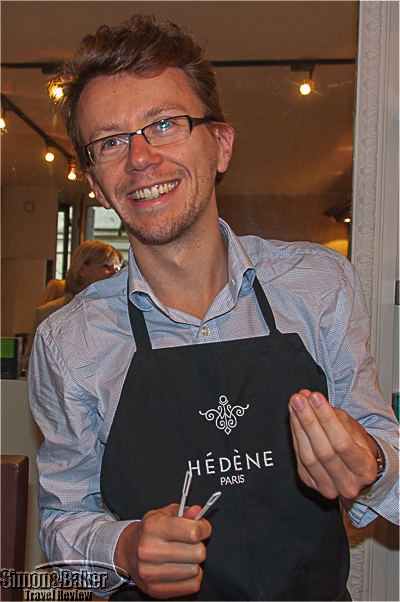
Cyril Marx explaining the finer points of monofloral beekeeping
This impression was confirmed a couple of weeks later when I attended an Hédène honey tasting at a Latin Quarter gourmet shop (86 rue de l’Université, 75007 Paris, France, +33 6 63 04 98 82 86, http://www.hedene.fr/en/, contact@hedene.fr ). I immediately spotted my three old acquaintances Sapin du Jura, Lavande de Provence and Romarin du Languedoc among a display of the signature cubes with their tailored white labels and black tops. The collection also included Acacia de Bourgogne (Burgundy Acacia Honey), Tilleul de Picardie (Picardy Linden Honey) and Châtaignier du Tard (Tarn Valley Chestnut Honey), lined in a palette ranging from the palest of golds to rich copper.
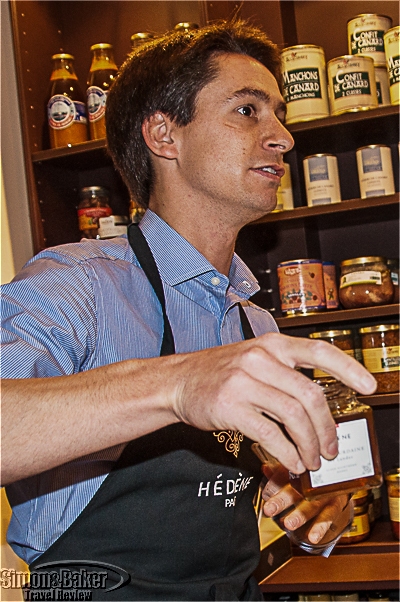
Alexis Ratouis conducting a tasting of Hédène honeys
But mostly I met the two enthusiastic young men clad in matching dark grey aprons, who were orchestrating the proceedings, Cyril Marx and Alexis Ratouis, the cofounders of Hédène, a brand of premium French monofloral artisan honeys created in 2013; and I got the answer to my unspoken question: what makes Hédène honeys so special that they have already garnered preeminent space on the shelves of épiceries fines (gourmet shops) throughout France; and gained staple status in the pantry of my Parisian gourmet friend?
The newly introduced Bourdaine des Landes was the star of the honey tasting (click to enlarge)
Cyril and Alexis met at university in Paris and developed a friendship based on common interests including apiculture. Cyril’s family has kept hives in the Cevennes for four generations, while Alexis’ relatives keep their own bees in Savoy. Both men have enjoyed participating in honey harvests since childhood. Even as they completed their education and began their professional careers, they nurtured their passion for apiculture at le Rucher Ecole du Jardin du Luxembourg (founded in 1856, the Luxembourg Garden Hive is recognized as the oldest ongoing urban hive in France, and one of its most prestigious apicultural teaching institutions). After two years of intense planning, they decided to make it their career. Hédène was launched that year.
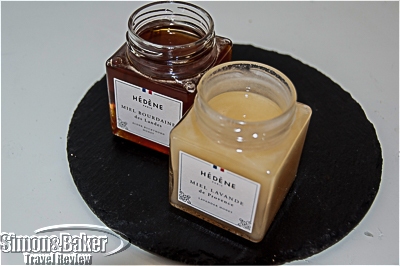
My current Hédène favorite French monofloral honeys
“We aim to take our customers on a journey of the diverse regions of France. All our honeys are unique monofloral vintages issued from a flower characteristic of its area of origin, each with its distinctive color, taste and texture,” Cyril explained.
In each area, they select artisans who uphold the highest standards of traditional beekeeping. Those chosen suppliers also commit to adhering to the rigorous specifications set by Hédène. But how do they ensure that the bees will make single flower honey? The selected beekeepers in areas where the target plant predominates must time the introduction of the hive and the actual harvesting of the comb to coincide with the peak blooming period. To be chosen as an Hédène product, the honey must be analyzed and laboratory certified to contain the required pollens.
Because of these rigorous requirements, as in the world of fine wines, the quantities of an especially prized vintage may be limited.
Hédène monofloral honeys ready for tasting (click to enlarge)
It was the case with the Miel Bourdaine des Landes (Adler Buckthorn Honey from the southwestern France Atlantic coast) being introduced that day. It was the color of fine Cognac, full bodied with a delicately astringent, quince-like finish. There will be no more than 2,000 jars available this fall, and with the holiday gifting season coming up I doubted they would last long on the market. I immediately purchased two jars, one for my honey connoisseur friend, the other one for myself. I can’t wait to hear what she thinks of it. As for me, I expect it will be delicious as a glaze for roasted pork tenderloin. And by the way, that tablespoon of Miel Romarin du Languedoc did work wonders for the vinaigrette on our mixed summer’s greens salad.

